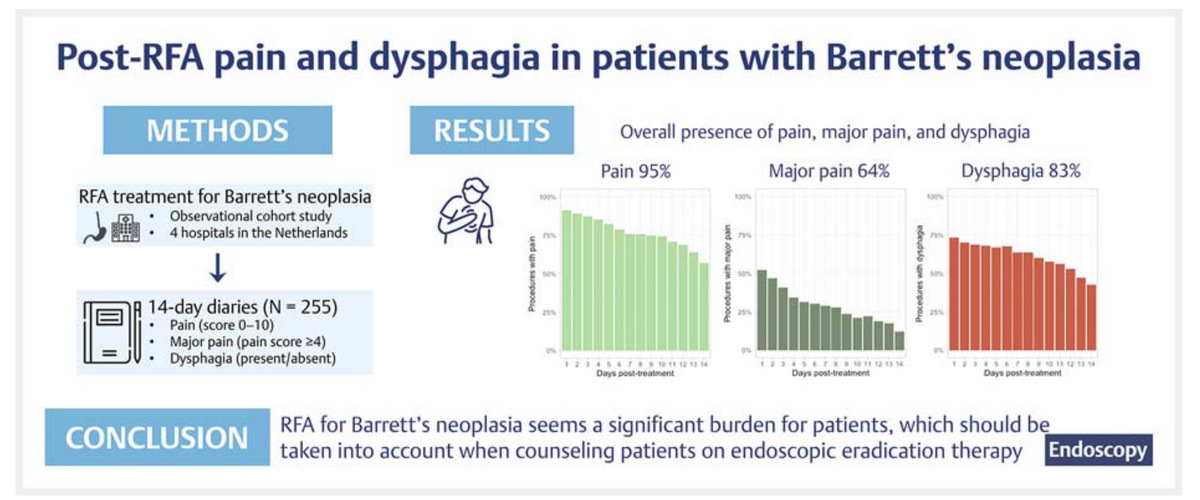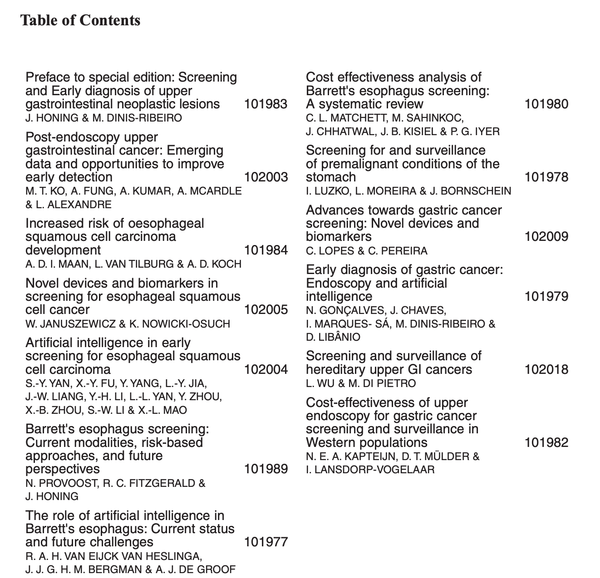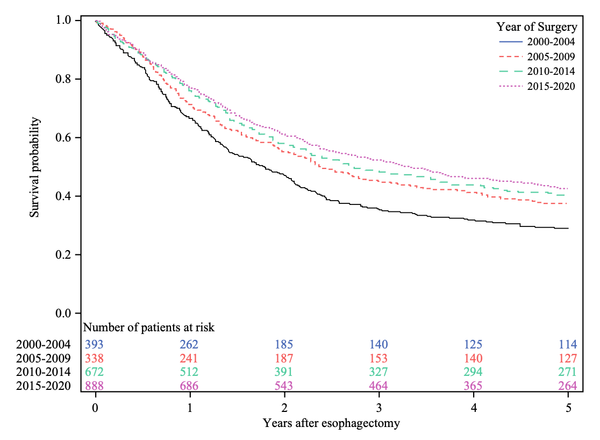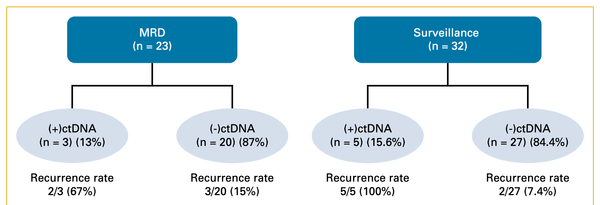Frequency of post-RFA pain and dysphasia

Radio frequency ablation (RFA) has become a standard of care for persons with advanced dysplasia in Barrett's, but little has been published regarding the occurrence and predictors of post-procedure symptoms. This study aimed to describe the course of post-RFA symptoms and identify possible associated risk factors in patients with Barrett's esophagus-related neoplasia. The study found that RFA treatment caused considerable post-procedural symptoms of significant duration in the vast majority of patients, with almost all patients experiencing pain and dysphagia after the procedure. The risk of post-procedural pain increased with BE length, younger age, and lack of prior ablation therapy, while the risk of dysphagia decreased with age and increased with post-procedural pain. The findings of the study suggest that post-procedural symptoms should be taken into account when counseling patients before starting endoscopic eradication therapy.
Endoscopy. 2023 Mar;55(3):255-260. doi: 10.1055/a-1929-1448. Epub 2022 Sep 7. PMID: 36070753
The course of pain and dysphagia after radiofrequency ablation for Barrett's esophagus-related neoplasia
Anouk Overwater 1 2, Sjoerd G Elias 3, Erik J Schoon 4 5, Jacques J G H M Bergman 6, Roos E Pouw 6, Bas L A M Weusten
Abstract
Background: Radiofrequency ablation (RFA) is effective for eradication of Barrett's esophagus (BE) neoplasia, but little is known on the course of pain and dysphagia after RFA. We aimed to describe the course of post-RFA symptoms and to identify possible associated risk factors.
Methods: In this multicenter, observational cohort study, all RFA procedures registered in a prospective database were included. Patient and treatment characteristics were collected from medical records and patients self-registered post-procedural symptoms in electronic symptom diaries for 14 days. Mixed model regression was used for the analyses.
Results: In total, 255 diaries were completed. Post-RFA pain was reported for 95 % (95 %CI 93-98) of procedures (median duration 14 days; 25th-75th percentiles [p25-p75] 11-14) and major pain for 64 % (95 %CI 58-69; median duration 8 days, p25-p75 3-13). Post-procedural pain significantly increased with BE length, younger age, and no prior ablation. Dysphagia was present after 83 % (95 %CI 79-88) of procedures (median duration 13 days, p25-p75 9-14). The risk of dysphagia decreased with age and increased when patients experienced more pain.
Conclusions: RFA treatment for BE-related neoplasia seems a significant burden for patients, and post-procedural symptoms should be taken into account when counseling patients before starting endoscopic eradication therapy.
Thieme. All rights reserved.




